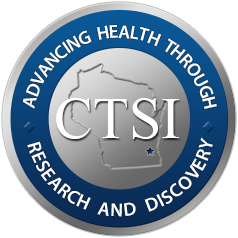Analyte variations in consecutive 24-hour urine collections in children. J Pediatr Urol 2017 Dec;13(6):632.e1-632.e7
Date
07/26/2017Pubmed ID
28739373DOI
10.1016/j.jpurol.2017.06.014Scopus ID
2-s2.0-85025144820 (requires institutional sign-in at Scopus site) 10 CitationsAbstract
PURPOSE: The metabolic evaluation of children with nephrolithiasis begins with a 24-h urine collection. For adults, the diagnostic yield increases with consecutive collections; however, little is known regarding the variability of multiple 24-h studies in the pediatric population. We sought to evaluate the variability of consecutive 24-h urine collection in children through a multi-institutional study hypothesizing that compared with a single collection, consecutive 24-h urine collections would reveal a greater degree of clinically useful information in the evaluation of children at risk for nephrolithiasis.
MATERIALS AND METHODS: Including data from six institutions, we identified children less than 18 years of age considered at risk for recurrent nephrolithiasis, undergoing metabolic evaluation. We evaluated a subset of patients performing two collections with urine creatinine varying by 10% or less during a 7-day period. Discordance between repeat collections based on normative urine chemistry values was evaluated.
RESULTS: A total of 733 children met inclusion criteria, and in over a third both urine calcium and urine volume differed by 30% or more between samples. Urine oxalate demonstrated greater variation between collections in children <5 years than among older children (p = 0.030) while variation in other parameters did not differ by age. Discordance between repeat samples based on normative values was most common for urine oxalate (22.5%) and the derived relative supersaturation ratios for both calcium phosphate (25.1%) and calcium oxalate (20.5%). The proportion of discordant samples, based on normative thresholds, as well as variability greater ≥30% and 50%, respectively, are shown in the table.
CONCLUSIONS: Our analysis indicates that stone risk in as many as one in four children may be misclassified if normative values of only a single 24-h urine are used. In light of these findings, repeat 24-h urine collections prior to targeted intervention to modify stone risk are advised to increase diagnostic yield in children at risk for nephrolithiasis.
Author List
Ellison JS, Hollingsworth JM, Langman CB, Asplin JR, Schwaderer AL, Yan P, Bierlein M, Barraza MA, Defoor WR, Figueroa TE, Jackson EC, Jayanthi VR, Johnson EK, Joseph DB, Shnorhavorian MAuthor
Jonathan Scott Ellison MD Associate Professor in the Urologic Surgery department at Medical College of WisconsinMESH terms used to index this publication - Major topics in bold
AdolescentChild
Child, Preschool
Female
Humans
Infant
Male
Nephrolithiasis
Time Factors
Urine Specimen Collection









